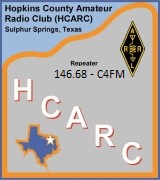Preparedness Tips and Links
Make an Emergency Plan
www.Ready.Gov
www.Redcross.orgGet an Emergency Kit (for the house and the car)
www.CDC.gov
www.Redcross.org
First Aid and Emergency Preparedness
First Aid Kits
A first aid kit is a standard item to have when preparing for any type of emergency. It is a kit that’s stocked with medical supplies such as antibiotic ointments, antiseptic wipes, aspirin, anti-itch creams, and thermometers. They also include items such as bandages, gauze, tweezers, and gloves. These kits can vary in size depending on how they’re intended to be used. People may carry a well-stocked kit in their vehicle for treatment of injuries that might occur when traveling. A person should also always keep a kit in their home, in a location that’s accessible to all adults in the house but out of the reach of children. A backup kit may also be stored with the family’s emergency supplies. These should be checked regularly to dispose of and replace any expired items and to replenish any items that have been used. Ideally, this should be done every three months.
Preparing for a Natural Disaster
Fires, floods, earthquakes, and hurricanes are all examples of natural disasters that can be sudden and dangerous. One can begin preparing for one of these disasters by creating an emergency kit containing necessities such as nonperishable food, water, a flashlight with extra batteries, and blankets. Because natural disasters are all different and destructive in their own way, one will need to prepare and respond to them differently. Families should review the types of natural disasters that are most common in their area. While home fires can occur anywhere, some areas may also be prone to earthquakes, while others may experience tornadoes. During an earthquake, it is best to stay in open spaces if outdoors. If indoors, a person should seek cover beneath a sturdy desk or table that’s away from windows or heavy objects that may fall on it. While under the desk, they should also protect their head. When caught in a natural disaster with high winds, such as a hurricane, one should stay indoors, stay low and near the center of the building, and keep away from windows. As with earthquakes, they should also protect their head and neck from injury. During fires and certain other disasters, being indoors can prove deadly, so people should have a set escape plan in place. The plan should be formed with the help of others who live in the home and include at least two potential escape routes from each room if possible. The plan should be practiced so that everyone knows what to do. Another detail that should be figured out in advance is a gathering place where all members of a household can meet after successfully escaping the home. In addition, a person who lives in another city should be designated as a family contact person after a major event.
Preparing for Health Emergencies
Health or medical emergencies, which can include a heart attack, stroke, or severe trauma, are serious and often life-threatening matters that require some form of immediate action. A person doesn’t need to be a nursing student or professional to recognize the warning signs of a potential health emergency. These signs may include chest pain or pressure for more than two minutes, difficulty breathing, or vomiting blood. A person can prepare for health emergencies by taking a CPR and first aid class. It can be helpful to keep a list of emergency contact information available in a location where it can easily be seen or programmed into one’s phone. These numbers should include the poison control center as well one’s doctor and the family pediatrician. The name and phone number of a contact person who is aware of one’s medical history should also be programmed into one’s phone. This should be designated as “In Case of Emergency” or ICE and is meant to help first-responders in the event that the injured individual is unresponsive.










